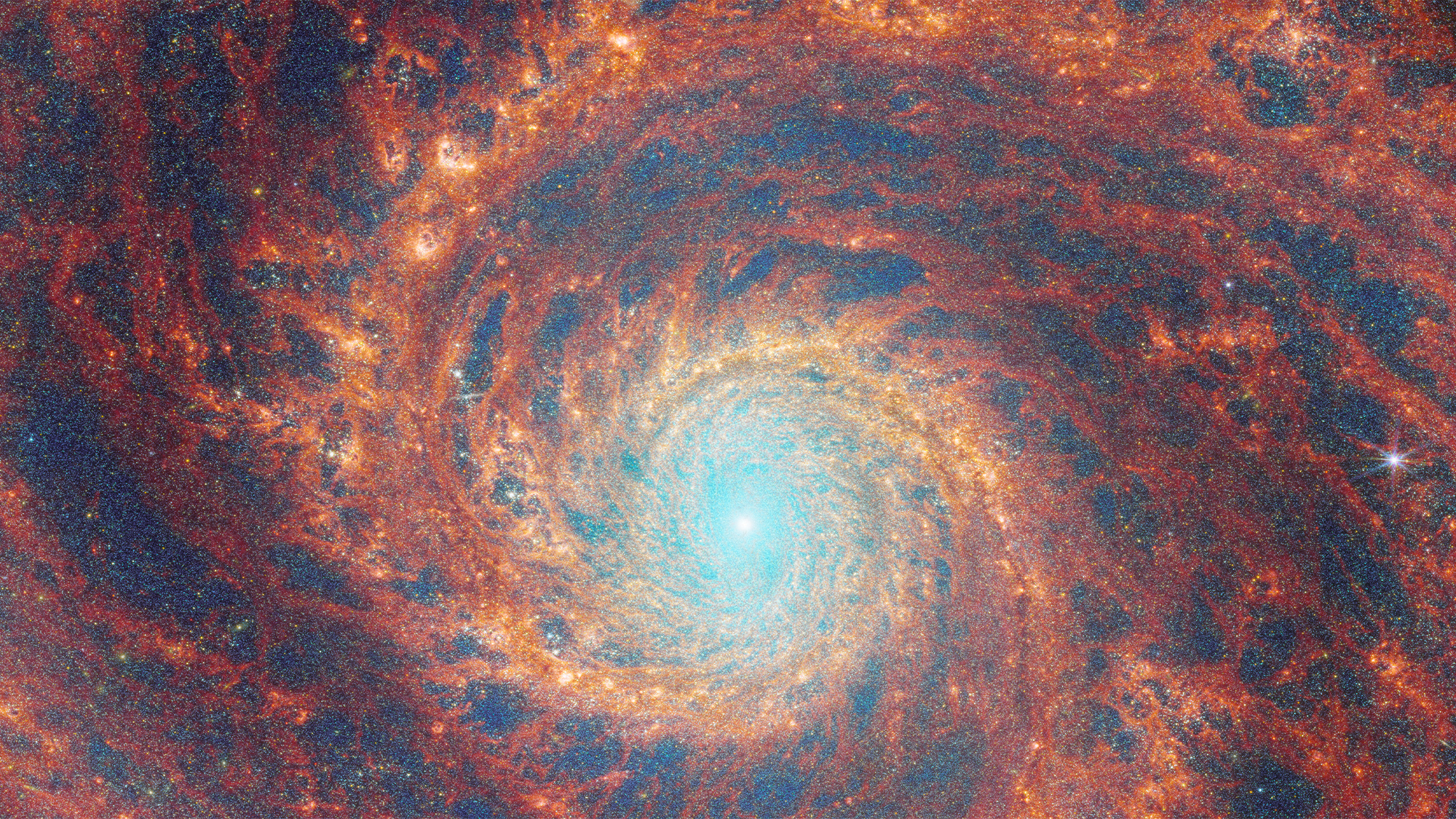

The James Webb Space Telescope (JWST) has captured a stellar new image of the Whirlpool Galaxy (aka M51 or NGC 5194), a grand-design spiral galaxy about 27 million light-years away from Earth. According to the European Space Agency (ESA), grand-design spiral galaxies like this one have prominent, well-developed spiral arms, unlike other spiral galaxies that have more ragged or disrupted spiral arms.
[Related: Herschel Space Telescope’s First Images Give Promising Glimpse of What’s to Come.]
M51 lies in the constellation Canes Venatici (or The Hunting Dogs) and is trapped in a bit of a tumultuous relationship with the dwarf galaxy NGC 5195. The interaction between these two galactic neighbors has been one of the more well studied galaxy pairs in the sky. M51’s gravitational influence on its smaller companion is believed to be partially responsible for the grand nature of its prominent and distinct spiral arms.
This new galactic portrait uses data from JWST’s Near-InfraRed Camera (NIRCam) and Mid-InfraRed Instrument (MIRI). This new observation is one of a series of observations collectively titled Feedback in Emerging extrAgalactic Star clusTers (FEAST). The FEAST observations were designed for astronomers and the public to learn more about stellar feedback and star formation environments outside of the Milky Way galaxy.
Stellar feedback describes the outpouring of energy from stars into the environments which form them. It is a crucial process in determining the rates at which stars form, and is important to building accurate models of star formation.
“Stellar feedback has a dramatic effect on the medium of the galaxy and creates a complex network of bright knots as well as cavernous black bubbles,” the ESA wrote in a statement.
In the new image, the dark red regions trace the filamentary warm dust permeating the medium of the galaxy. These rosy regions show the reprocessed light from complex molecules forming on dust grains. The orange and yellow portions show areas of ionized gas created by recently formed star clusters.

Before JWST became operative in 2022, other observatories including those made at the Atacama Large Millimetre Array in the Chilean desert and the Hubble Telescope gave astronomers a glimpse of star formation. These observations occurred at either the onset, when the dense gas and dust clouds where stars will form, or after the stars have been destroyed with their energy their natal gas and dust clouds. JWST is opening up a new observational window to the earlier stages of star formation and stellar light.
“Scientists are seeing star clusters emerging from their natal cloud in galaxies beyond our local group for the first time. They will also be able to measure how long it takes for these stars to pollute with newly formed metals and to clean out the gas (these time scales are different from galaxy to galaxy),” wrote the ESA.
[Related: Our universe mastered the art of making galaxies while it was still young.]
More observations and study of these processes is expected to lead to a better understanding of how the whole star formation cycle and metal enrichment process are regulated within galaxies. It also could help present a more clear time scale for when planets and brown dwarfs form because once gas and dust is removed from newly formed stars, there isn’t any material left to form planets.
